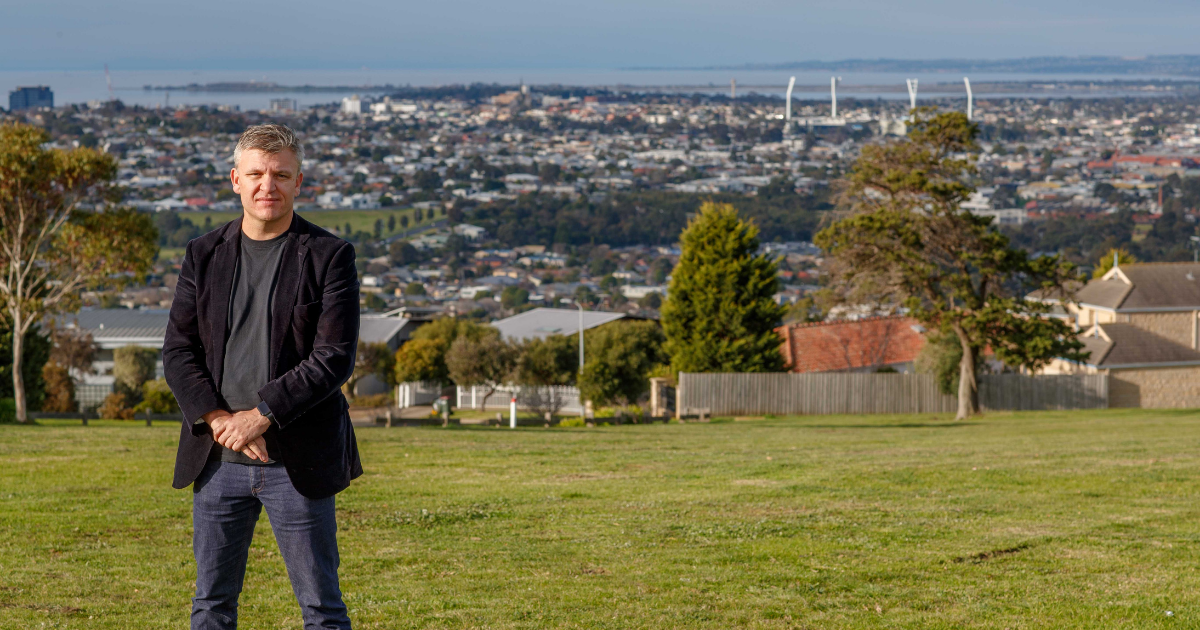MPs and city clash over housing green space plan

South Barwon MP Darren Cheeseman has hit out at a City of Greater Geelong proposal to reduce green space requirements for high-density housing developments. Photo: SUPPLIED
STATE government MPs have taken aim at a City of Greater Geelong planning amendment that would reduce green space requirements for neighbourhoods across the city.
South Barwon MP Darren Cheeseman said the city’s rules would “pave the way for apartment blocks and high-density lots with no green space” and create “Melbourne-style” housing that jars with Geelong’s current streetscapes.
But the city says its changes are aimed at increasing housing diversity for the region’s growing population and that its strategy retains protections for neighbourhood character.
The proposal would remove a minimum garden area of up to 35 per cent for its housing growth areas, which was part of state government residential zoning reforms announced in 2017 and implemented during 2020.
The city’s amendment would instead keep previous rules regarding street setbacks, site coverage (at least 30 per cent of land available for landscaping) and private open space.
Planning Minister Richard Wynne received the city’s planned amendment in April 2020 but is yet to make a decision.
In March last year, then-Geelong mayor Stephanie Asher wrote to Mr Wynne in a bid to expedite a ruling, indicating the delay was affecting the city’s delivery of key housing strategies and stymying economic growth.
The city said new rules have delayed about 30 active planning proposals, which include apartment buildings and multi-dwelling developments.
The changes affect Increased Housing Diversity Areas under the city’s 2007 Housing Diversity Strategy, which include streets surrounding shopping centres and train stations.
Urban Geelong growth suburbs include Bell Park, Bell Post Hill, Newcomb, Belmont, Corio, East Geelong, Geelong West, Hamlyn Heights, Highton, Lara, Marshall, North Geelong, South Geelong and Waurn Ponds.
Bellarine communities including Barwon Heads, Ocean Grove, Portarlington and St Leonards are also identified growth zones but are subject to a separate planning provision. The in-progress Bellarine Distinctive Area Landscape (DAL) process will set building height and site coverage limits for those areas.
Mr Cheeseman has launched a petition for his government colleague Mr Wynne to reject the city’s request, a move he said would “safeguard the character, green space and natural amenity” of neighbourhoods.
He also criticised a lack of new consultation informing the planned changes, which relied on feedback received while drafting the 2007 plan, which he condemned as an attempt to “sneakily avoid public scrutiny”.
Geelong MP Christine Couzens said the city’s plan was “appalling”, while Bellarine MP Lisa Neville said the minimum garden area was required to protect lifestyle and character of local communities.
However, the city hit back at claims attacking its transparency, and pointed out its proposed amendment was voted on at an open council meeting in March 2020, where councillors unanimously supported advocating for the change.
Director of city planning and economy Gareth Smith said the City of Greater Geelong wanted to “work constructively” with the state government about the new laws and “achieve certainty” for live planning applications.
“We want to deliver more diverse housing options for our growing population while protecting neighbourhood character.
“Mr Cheeseman has not approached the city about the concerns raised in his petition and we look forward to discussing the matter with Mr Cheeseman directly to try and reach a productive resolution for our community.”

















